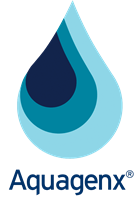University of Colorado Boulder Evaluates Water Treatment Plants in Amazon
 The University of Colorado Boulder Department of Civil, Environmental and Architectural Engineering degree programs offer careers in the planning, design, construction and management of the built and the natural environment. www.colorado.edu/ceae
The University of Colorado Boulder Department of Civil, Environmental and Architectural Engineering degree programs offer careers in the planning, design, construction and management of the built and the natural environment. www.colorado.edu/ceae
Challenge
In the summer of 2013, a team of environmental engineering graduate research students at the University of Colorado Boulder conducted water testing in rural communities along the Napo and Amazon River near Iquitos, Peru. Their project involved monitoring and evaluating water quality at community water treatment plants and at the household level. Field conditions in the Amazon were rugged, lacking electricity and a lab. Lia Brune says her team “needed a microbial test that could hold up to the field conditions and provide reliable results, all while incubating at the ambient temperatures three degrees south of the equator.”
Solution
 The team used the Aquagenx CBT in Peru to collect water samples at centralized community water treatment plants and measure the effectiveness of the water treatment process. In order to measure for possible recontamination of water between collection at the water treatment plant and consumption in the household, storage buckets in households were also sampled. Water from point-of-use filters that consist of a membrane filter were also sampled as a comparison to centralized water treatment.
The team used the Aquagenx CBT in Peru to collect water samples at centralized community water treatment plants and measure the effectiveness of the water treatment process. In order to measure for possible recontamination of water between collection at the water treatment plant and consumption in the household, storage buckets in households were also sampled. Water from point-of-use filters that consist of a membrane filter were also sampled as a comparison to centralized water treatment.
Test Results
CBT results were reliable and enabled the research team to quantify E. coli contamination at varying levels in various drinking water sampling sites. They discovered that water passing through the membrane filter in the point-of-use filters was contaminated, suggesting microbial growth within the filter itself. As a result of this finding, a secondary barrier to microbial contamination was added to the point-of-use treatment system in order to effectively remove E. coli. Positive E. coli counts at the household level prompted the research team to promote community education of proper handling and storage of drinking water.
Conclusion
“Compared to other methods, the CBT is light, compact, easy to use and not easily contaminated in the field,” says Brune. “The CBT is the only product I’ve found that is suited for water quality testing in the Amazon. No temperature control or laboratory are needed, two things that do not exist in rural communities of the Amazon.”
